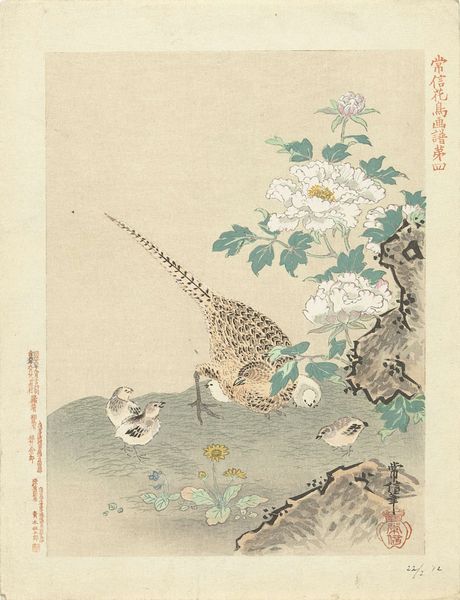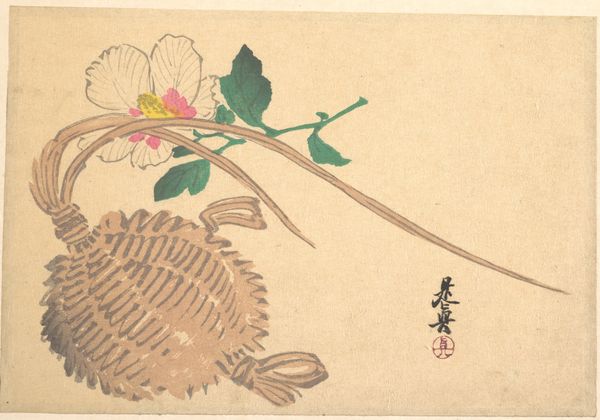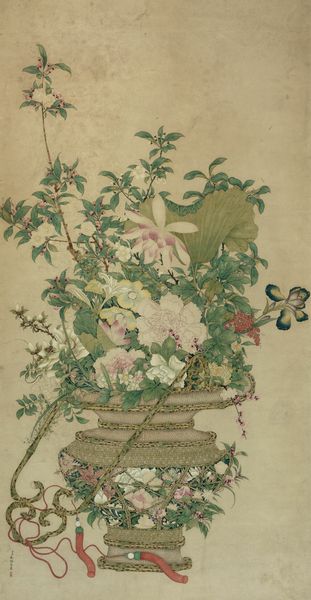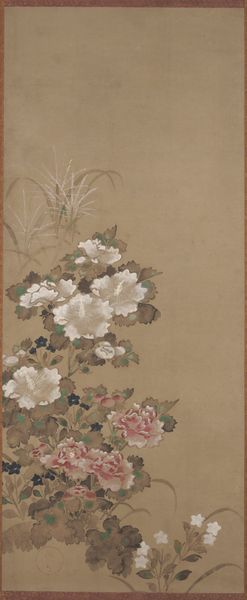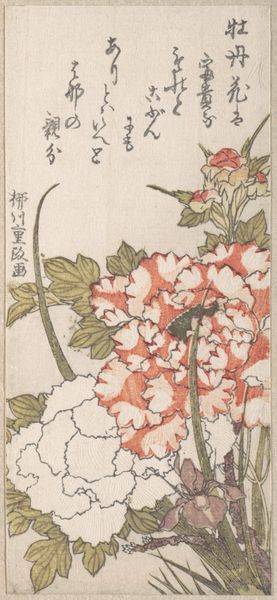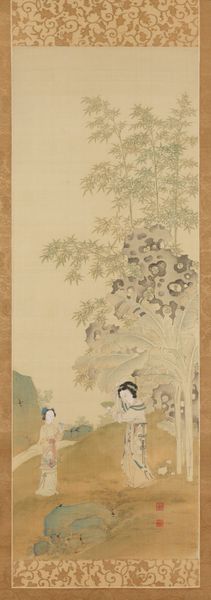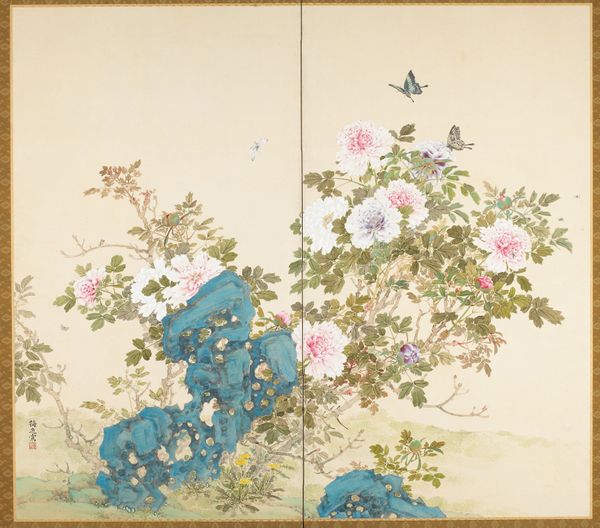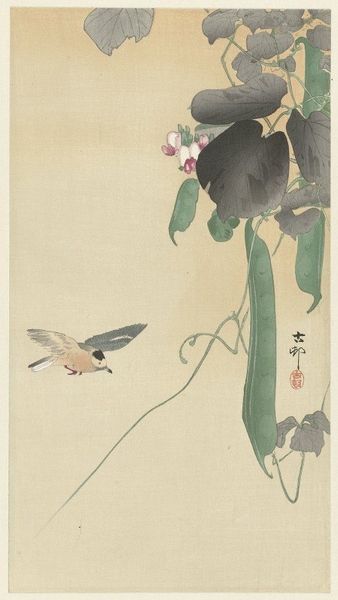
painting, paper, watercolor, hanging-scroll, ink, color-on-paper
#
water colours
#
animal
#
painting
#
asian-art
#
landscape
#
ukiyo-e
#
japan
#
figuration
#
paper
#
watercolor
#
hanging-scroll
#
ink
#
color-on-paper
#
orientalism
#
genre-painting
#
watercolor
Dimensions: 57 7/8 × 18 in. (147 × 45.72 cm) (image)78 1/2 × 19 in. (199.39 × 48.26 cm) (mount, without roller)
Copyright: Public Domain
Editor: Shin Sen’s "Cats by Bamboo and Chrysanthemums," dating back to the 18th century, is displayed as a hanging scroll. Rendered with ink and watercolors on paper, its earthy tones create such a calm, gentle scene. What elements stand out to you? Curator: The choice of materials immediately frames my interpretation. Consider the paper: handmade, likely from specific fibers dictating the absorbency and texture guiding the ink’s flow. What does this materiality suggest about the social status of art production? Was it destined for elite circles or wider distribution? Editor: So, the paper itself tells a story beyond just being a surface. What about the combination of ink and watercolor? Curator: Precisely! Ink provides the skeletal structure and precise detail, whereas watercolor allows for atmospheric effects. The layering speaks to a conscious labor process—a deliberate building up of image and meaning. It's crucial to remember that each stroke involved a set of skills honed through potentially years of training. How does it then complicate Western notions of artistic genius? Editor: That is so interesting. It redefines ‘genius’ as something tied to intense practice and a deep relationship with the materials, rather than something innate. Does that understanding also affect how we perceive the depicted landscape? Curator: Undeniably. Bamboo, chrysanthemums – all chosen and depicted not just for visual pleasure, but with intentional, socially loaded significance that affected consumption. Think about trade routes and imperial desires. Editor: Seeing how the physical materials and cultural context were deeply interwoven makes me appreciate this piece in an entirely new light! Thanks for making the history come alive. Curator: It's these considerations – the making, the material, the historical context – that allow us to see the world embedded within the work.
Comments
minneapolisinstituteofart almost 2 years ago
⋮
Shen Quan, also known as Shen Nanpin, moved from his native China to Nagasaki in far western Japan in 1731. Although he only stayed for a couple of years in Nagasaki, he gained many followers to whom he taught traditional Chinese painting methods. He focused on the realistic depiction of birds and flowers. Shen’s Japanese followers came to be known as the Nagasaki school, which included Kumashiro Yūhi, whose painting of magpies is displayed nearby. Shen created this painting of cats playing near bamboo and chrysanthemums while he was in residence in Nagasaki. Both cats and chrysanthemums can symbolize longevity.
Join the conversation
Join millions of artists and users on Artera today and experience the ultimate creative platform.
